On This Day in (Engineering) History
January 14, 1966 - Soviet aircraft and rocket designer Sergei Korolev dies.
He put the first artificial satellite in Earth orbit, put the first animal, and then the first human into space. He began his career as an aircraft designer and fell foul of Stalin's purges in the 1930s. When he took on leadership of the USSR's rocket and space programs, his identity was a state secret, becoming known only after his death.
Sergei Korolev's life was relatively short but full of drama and achievement.
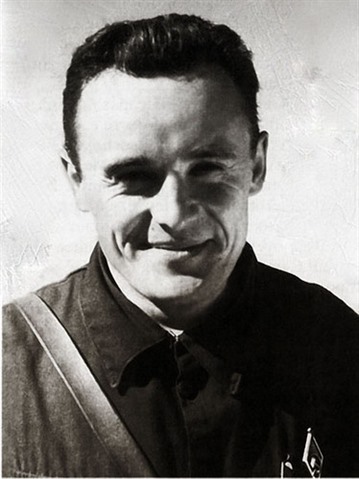
Concept
Sergei Korolev (pronounced, 'korol-yoff) was born in Zhitomir, a part of the Russian Empire, now Zhytomyr in modern Ukraine in 1906 on January 12, 1907 [in the Old Style Julian calendar used in Russia at the time - December 30 1906]. His father, Pavel, was a literature teacher, and his mother, Maria, came from a well-off mercantile family. But the marriage was unhappy, and Sergei's parents divorced before 1915. When Maria remarried, her new husband, Grigory Balanin, was a German-educated electrical engineer. This marriage was happier, and Grigory had a good relationship with Sergei.
Sergei Korolev, 1934. Source: Wikimedia Commons
Design
At school, Sergei was noted as being argumentative, stubborn and persistent. He took to reading unusually early, something he excelled at in school. His schooling also uncovered his prodigious talent in maths.
In 1913, the family moved to Odessa, where Sergei underwent vocational training in carpentry and academic subjects at the Odessa Building Trades School. The 1917 Revolution caused chaos in Russia, which disrupted education across the country. In that time, Sergei was home-schooled by his stepfather.
By 1924, he decided to study maths, physics and engineering at Kiev's Polytechnic Institute. Later, he was accepted into the Bauman Moscow State Technical University.
Prototype
A thread running through Sergei's life so far was his fascination with aircraft and flying. Sources vary on when and where he saw his first aeroplane, but he was smitten after seeing that first plane. As a student at the Odessa Building Trades School, he began work on his first glider. Within ten years he joined the Society of Aviation and Aerial Navigation of Ukraine and the Crimea (OAVUK) and took up work on a second glider, the K-5.
At the Kiev Polytechnic Institute, Sergei joined a limited class on glider construction. The cost to Sergei was two broken ribs when the glider they built crashed. In 1929, he was awarded his diploma for designing a practical aeroplane. Sergei studied aviation at the Bauman Moscow School under the designers Nikolay Zhukovsky and Andrei Tupolev, who became Sergei's mentor. During his studies, he designed and built a series of gliders. His degree thesis pointed to the scale of his ambition – the SK-4 was the most advanced of the series and had been designed to fly in the stratosphere.
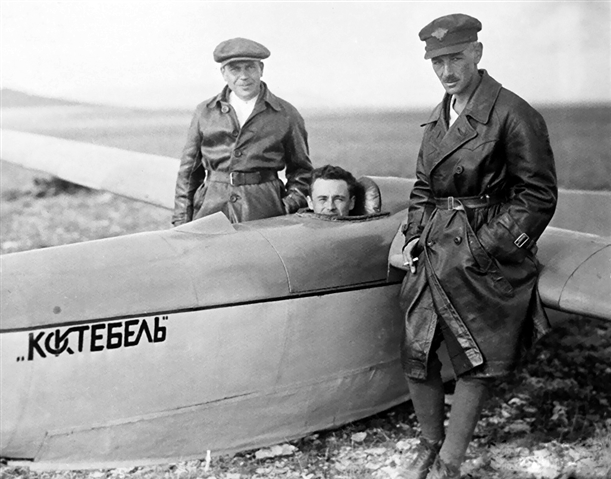 Flight was one of his first loves. His other was rockets.
Flight was one of his first loves. His other was rockets.
Testing
In 1931, Korolev and Friedrikh Tsander, a space travel enthusiast, did something about their interest in rockets and founded the Moscow Group for the Study of Reactive Motion (GIRD - Gruppa Isutcheniya Reaktivnovo Dvisheniya, Group for Investigation of Reactive Motion) which, two years later, launched the USSR's very first liquid-propellant rockets, the GIRD-9 and 10.
It wasn't long before the military merged the group with the Gas Dynamics Laboratory in Leningrad to create the Reaction Propulsion Scientific Research Institute (RNII) to design rocket-propelled missiles and gliders. It featured the very best Soviet rocket and aircraft designers, all under one roof.
Ivan Kleymyonov headed up the new bureau, with Sergei as his deputy. This didn't last, after a disagreement Korolev found himself demoted to heading up the winged missiles section. Georgy Langemak replaced him. Valentin Glushko led the design of rocket engines.,
Korolev sitting in the cockpit of the glider 'Koktebel,' 1929. Source: Wikimedia Commons
Purged
By 1938, the team had prepared the USSR's first rocket-powered aircraft. This took place against the background of Stalin's purges of the late 1930s, when millions were arrested as 'enemies of the people' and executed or sent to labour camps.
The RNII team were no different. The organisation sustained great damage when its leadership was arrested, tortured and executed in 1937 and 1938. Korolev was himself picked up in June 1938, accused of deliberately slowing the USSR's program so Nazi Germany could overtake it.
He spent a year in the Kolyma gold mine, a feared labour camp in the far northeast of Siberia. The harsh conditions – heavy manual labour, inadequate rations, beatings – left him with lifelong health problems. He suffered a heart attack and lost his teeth to scurvy. A knee needed reconstruction, and he couldn't turn his head on his neck, needing to move his torso instead.
After writing appeals to Stalin and the new NKVD chief, Levrenti Beria, Sergei was retried on lesser charges and sentenced to ten years, to be served in a laboratory prison, a 'sharashka,' within the gulag system.
Back
In 1944, he was released and inducted into the Red Army. As the war ended, he was sent to Germany to oversee the removal and evaluation of captured V-2 rockets. Given only three days to design a Soviet copy, he and his team launched the D1 and D2 rockets, which improved the V-2's range from 300 km, or 186 miles to 685 km or 426 miles.
In 1948, he began work on the R1, the first in a series of rockets culminating in the R7 of 1957, the first Intercontinental Ballistic Missile (ICBM).
The R7 used four fall-away boosters mounted around a central core. Valentin Glushko designed the lower stages, 'blocks' powered by a mix of kerosene and liquid oxygen fuel, burned within four combustion chambers. The chambers were served simultaneously by Glushko's small fuel pumps and a sophisticated pipe system, all of which gave it a range of 7,000 km or 4,300 miles.
What might look like 20 engines was, in fact, only five, each using four fuel nozzles.
After four failed launches, its first successful flight took it all the way to the Kamchatka Peninsula in the Soviet Far East, beating the US to the prize of launching the first ICBM. His reward was to be 'rehabilitated,' and his previous convictions were recognised as unjust. Korolev also joined the Communist Party.
Sergei's ambition had always been greater than just a missile; he had designed the rocket to go into space.
Object PS
From the moment Sergei became the Director of the Soviet Space Program, he would only be known as the 'Chief Designer' ('Glavny Konstruktor'), ostensibly to protect him from any attempts on his life. His identity would be a closely guarded secret until his death.
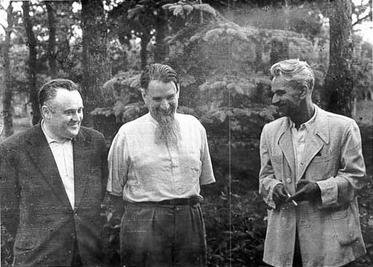
In the early 1950s, Korolev quietly coordinated with - fellow engineer, rocket scientist and enthusiast - Mikhail Tikhanovrov to persuade the Soviet government to fund a space programme. To help his cause, they both kicked off a modest program to put satellites into earth orbit, pointing out that the Americans were intent on a similar feat in time for the International Geophysical Year, a scientific event that would be staged in 1957 / 8. Instead of joining the effort, Korolev suggested beating them to the mantle of 'first into space.' And the R7 would be the rocket to do it. That got him the support he needed.
The original payload had to be scaled down because the R7 lacked the impulse power to get it into orbit. Instead, Korolev decided to send a reduced, simpler payload into orbit. Object PS, as it was called, was designed by Mikhail Khomyakov, built by Tikhanovrov and his team in under a month - all under Korolev's supervision.
Object PS was a polished metal sphere containing a battery-powered transmitter, which broadcast a signal using four aerials. We know it better as Sputnik 1.
'Chief Designer' Sergei Korolev, 'father of the Soviet atomic bomb' Igor Kurchatov, and 'Chief Theoretician' Mstislav Keldysh, 1956. Source: Wikimedia Commons
Live cargo
The planned launch was brought forward by two days just in case the Americans launched their satellite first. The launch of Sputnik on October 4, 1957, stunned the world. The Soviet government was, at first, less impressed. It was only the global astonishment that prompted Nikita Khruschev's own enthusiasm to push for more.
The only way to top this was to send a live being into space, not a human, but a dog called Laika. Laika would crew Sputnik 2 on the fortieth anniversary of the October Revolution, November 3, 1957 (in the Gregorian calendar, which the USSR now used).
The process was less than four weeks from idea to launch, which left no time for proper testing and still less for designing a way of bringing Laika back from orbit. He died after five hours in orbit of heat exhaustion.
The distant moon
By now, the obvious destination was the moon. Sergei had already been thinking about this before Sputnik 1.
The idea was to get a probe to the moon to show what could be done. The Luna series would do this. The first three attempts at launching Luna 1 failed. Political pressure to get there first meant a rushed process without enough resources and not enough testing.
When it finally launched, Luna 1 should have landed on the moon. While this failed, it missed its target and became the first Earth-based probe to orbit the Sun. It also became the first satellite to reach escape velocity. Luna 3 achieved its aim of reaching the moon to take the first photograph of its far side, a sight no human had ever seen.
While putting a probe on the moon was an achievement, the ultimate aim was to put a human there. To do that, a cosmonaut must first make it into Earth orbit.
Three things
To get a man to the moon, the Soviets would have to meet three objectives. One would be to put a man safely into (and out of) Earth orbit. Second would be the development of a crewed vehicle capable of landing on the moon. Third, a booster that would provide the power to get there and back.
To help with the first of these, Sergei already had the R7. It simply needed a vehicle to put a one-man crew into orbit.
That would be Vostok. Its one-man crew (who would have no input into the flight and none into the design, so not really a pilot) would sit inside a large 2.4-metre diameter aluminium sphere heavily shielded from the stresses of the flight.
The interior was padded, with three windows to provide exterior views. There was a minimum of controls and gauges, with subsystems placed in their own module. The descent module separated from the sphere before re-entry. Because it was spherical, Vostok's module didn't need the manoeuvring procedures that America's rival Mercury vehicle had to perform before re-entry.
Because there would be a landing on solid ground, rather than an ocean splashdown, the cosmonaut would need to leave the module 7km above the ground and parachute to the surface.
Unlike their American counterparts, cosmonauts had little to no input into the interior design of the Vostok orbiter. American pilots had no wish to be 'spam in the can.' Because there was no precedent of a human in space, there was no knowledge of how the human body would respond to being in space. As a result, cosmonauts had no input into the module's design, and the missions were controlled from the ground.
The first man in orbit
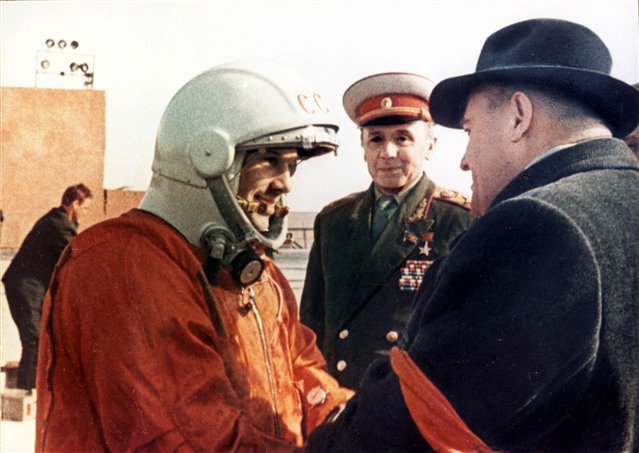
The first human into space would be Yuri Gagarin, a 28-year-old Air Force pilot from Klushino, near Smolensk.
He blasted off from the Baikonur Cosmodrome on April 12, 1961. His parting comment to Sergei was, 'Off we go!'
After blast-off, the five first-stage engines burned until they separated, when the core engine to power the rocket. When that separated, the orbiter was in a sub-orbital trajectory before being carried into orbit by the final upper stage. Once in orbit, the upper stage was ejected.
The final crashdown was in Kazakhstan, Yuri would spend 108 minutes in a low Earth orbit.
Crashdown
During the early 1960s, Sergei's health deteriorated. His work ethic, the heavy demands of his work and the expectations of the USSR and the public all weighed on him. So did the health effects of his imprisonment.
He wouldn't live to see any more successes, and some say his death meant the end of the Soviet Moon program, although it's also been said the Americans would have got there first anyway.
How and why Sergei Korolev died depends on the source. Some say he died from complications from cancer; others say he died from an operation to correct haemorrhoids.
Sergei finally became famous in the USSR, widely recognised as a national hero and a major figure in rocket design. And his name was no longer a state secret.
His R7 rocket engines are still used to power Soyuz rockets.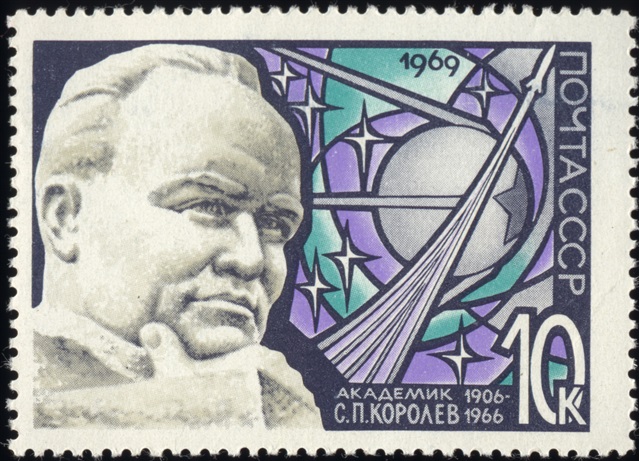
---------------------------------------
What do you think?
What other aviation and space flight figures do you think deserve greater recognition than they get?
Sergei Korolev on a Soviet stamp, 1969. Source: Wikimedia Commons
